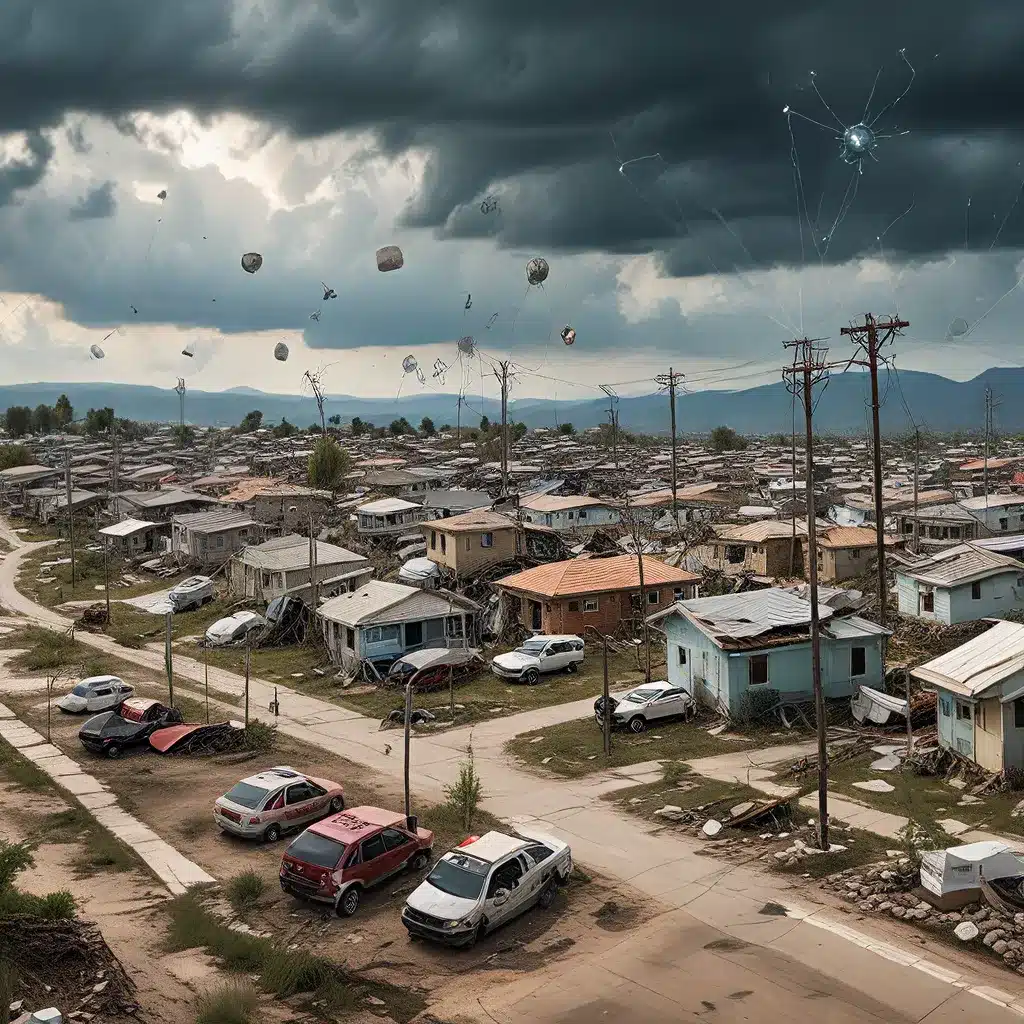
In an era of increasingly complex and unpredictable natural disasters, the role of sensor networks and the Internet of Things (IoT) in enhancing emergency response and community resilience has become paramount. These advanced technologies are revolutionizing the way we approach disaster management, enabling real-time situational awareness, coordinated emergency operations, and proactive mitigation strategies.
The Evolving Landscape of Public Safety Networks
Public safety networks have long been the backbone of emergency response and disaster management, facilitating reliable communication and coordination among law enforcement, fire departments, and other first responders. However, the limitations of legacy analog systems have become increasingly evident, hampering interoperability and compromising the effectiveness of these critical networks during crises.
The transition to digital and broadband technologies has been a game-changer, addressing these limitations and unlocking a wealth of new capabilities. Modern public safety networks now leverage advanced solutions, such as Geographic Information Systems (GIS), Big Data analytics, and Artificial Intelligence, to enhance situational awareness, improve resource allocation, and enable proactive interventions.
These technological advancements have paved the way for the integration of sensor networks and IoT into the realm of emergency management, further enhancing the efficiency and resilience of public safety operations.
Sensor Networks: Powering Smarter Emergency Response
At the heart of this transformation are sensor networks – interconnected arrays of sensors and devices that collect and exchange real-time data. These networks span a wide range of applications, from monitoring environmental conditions to tracking the status of critical infrastructure.
In the context of disaster response and resilience, sensor networks play a crucial role in:
Early Warning and Incident Detection
Strategically placed sensors can continuously monitor environmental parameters, such as weather patterns, water levels, and seismic activity, providing early warning signals for impending natural disasters. This early detection enables authorities to initiate timely evacuation procedures, deploy resources more effectively, and minimize the impact on communities.
Situational Awareness and Incident Monitoring
During an emergency, sensor-equipped devices can transmit vital information about the incident, including the location, severity, and evolving conditions. This real-time data empowers incident commanders and first responders with a comprehensive understanding of the situation, facilitating more informed decision-making and coordinated response efforts.
Resource Optimization and Emergency Management
IoT-enabled sensors can track the availability and location of emergency resources, such as medical supplies, equipment, and personnel. By integrating this data with analytics and AI-powered algorithms, public safety agencies can optimize the deployment and allocation of these resources, ensuring a more efficient and effective emergency response.
Disaster Recovery and Resilience
In the aftermath of a disaster, sensor networks can play a crucial role in assessing infrastructure damage, monitoring the restoration of essential services, and providing critical data to guide the recovery process. This continuous monitoring and data-driven approach enables communities to bounce back more quickly and build long-term resilience.
Enhancing Coordination and Collaboration
The true power of sensor networks and IoT in disaster response lies in their ability to facilitate seamless coordination and collaboration among various stakeholders, including emergency responders, government agencies, and the community.
Advanced communication platforms like Eyeson enable the establishment of virtual command centers, where incident commanders can coordinate their efforts, share real-time information, and make strategic decisions, regardless of their physical location. This level of interconnectivity and collaboration is crucial for an effective and cohesive emergency response.
Furthermore, IoT-powered applications and mobile devices can empower citizens to become active participants in the emergency management process, reporting incidents, sharing information, and receiving critical updates. This community engagement enhances situational awareness, strengthens resilience, and supports more comprehensive disaster response efforts.
Addressing the Challenges: Security and Energy Management
As the adoption of sensor networks and IoT technologies in emergency management continues to grow, it is essential to address the challenges that come with this increased connectivity and data-driven approach.
Security and Privacy Concerns
The integration of IoT devices into public safety networks raises concerns about data security and privacy, as sensitive information related to incident response and critical infrastructure can be vulnerable to cyber threats. Robust encryption protocols, secure communication channels, and proactive cybersecurity measures are crucial to protect these systems and ensure the integrity of the data they generate.
Energy-Efficient Sensor Network Design
The deployment and maintenance of sensor networks in disaster-prone areas can be challenging, particularly in terms of energy management. Implementing energy-efficient sensor network architectures, leveraging techniques like duty cycling, data aggregation, and renewable energy sources, can help ensure the resilience and sustainability of these systems during prolonged emergency situations.
The Future of Sensor Networks in Disaster Response
As the Internet of Things and sensor technologies continue to evolve, the potential for their integration into disaster response and community resilience is boundless. From autonomous vehicles and smart infrastructure to predictive analytics and intelligent early warning systems, the future of emergency management is poised to be transformed by these innovative technologies.
By embracing and investing in the development of sensor networks and IoT-driven solutions, communities around the world can enhance their preparedness, response capabilities, and long-term resilience in the face of natural disasters and other emergencies.
Ultimately, the convergence of sensor networks, IoT, and emergency management represents a pivotal step towards a safer, more resilient, and technologically-empowered future, where communities can better protect their citizens and safeguard their critical assets.
Visit sensor-networks.org to explore more insights and advancements in the realm of sensor networks and IoT, and discover how these technologies are transforming the landscape of disaster response and community resilience.